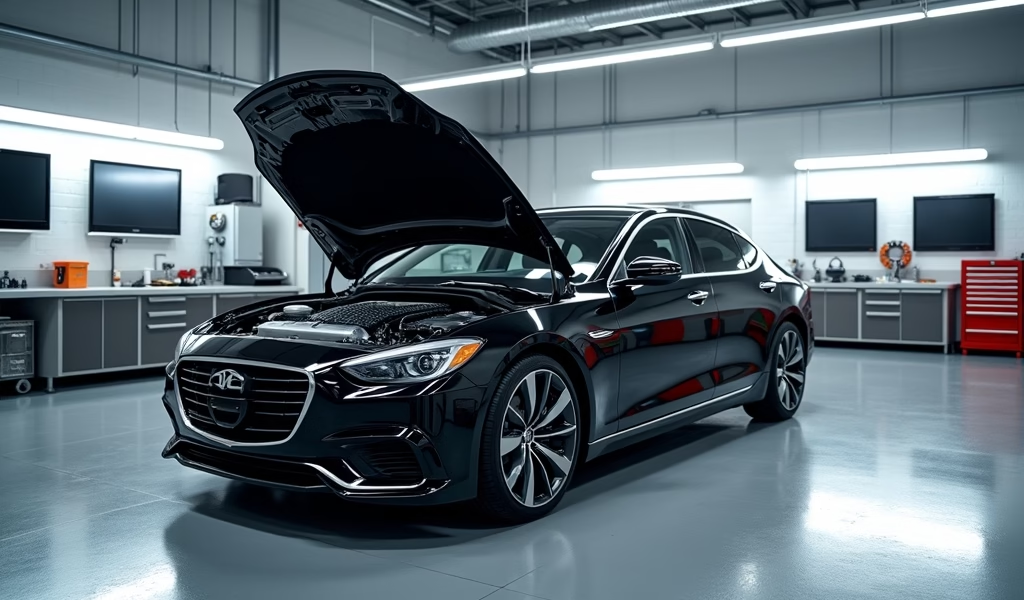Overview
This article explains that 0% financing car deals often come with hidden costs, including inflated vehicle prices and forfeited rebates, while typically requiring excellent credit scores (720+) to qualify. It provides strategies for improving credit, negotiating better terms, and evaluating alternatives like credit union financing, emphasizing the importance of calculating total costs rather than focusing solely on monthly payments.
Table of Contents
- What Are 0% Financing Car Deals?
- The Hidden Costs Behind Zero Interest
- Qualifying for 0% Financing
- DIY Credit Improvement Tactics
- How to Negotiate Better Financing Terms
- Alternatives to Dealer Financing
- Avoiding Common Financing Traps
- Conclusion
- Frequently Asked Questions
What Are 0% Financing Car Deals?
Have you ever driven past a car dealership with gigantic inflatable gorillas and flashing signs screaming “0% FINANCING!!!” in letters so big they could probably be seen from the International Space Station? As someone who’s spent 25 years under the hood and behind the financing desk, I can tell you these deals aren’t just eye-catching – they’re wallet-catching too.
Zero percent financing car deals are manufacturer-subsidized loan programs where you borrow money for a car and pay back exactly what you borrowed – not a penny more in interest. Sounds like automotive heaven, right? It’s basically like having your rich uncle front you $30,000 for a car and saying, “Just pay me back whenever, no rush, no extra fees.” Except in this case, your “uncle” is a multi-billion dollar corporation.
These tantalizing zero percent car deals typically appear when manufacturers need to boost sales of specific models, clear out last year’s inventory, or gain market share. They’re the automotive equivalent of that friend who offers to buy the first round of drinks – seems generous, but there’s usually something else going on beneath the surface.
I once had a customer, Bob, who was absolutely convinced he’d scored the deal of the century with his 0% financing offer. He strutted into my shop for his first oil change, bragging about how he’d “beaten the system.” Two years later, Bob discovered he’d paid $4,000 above market value for that car. The financing was free, but the car definitely wasn’t!
The Hidden Costs Behind Zero Interest
Here’s an insider secret from someone who’s seen the paperwork from both sides: dealerships and manufacturers aren’t charitable organizations. They’re not offering 0% financing out of the goodness of their corporate hearts. These programs exist because they still make money – just differently.
The most common trade-off comes in the form of inflated vehicle prices. When customers fixate on the 0% interest rate, they often pay less attention to the actual purchase price. It’s like being so excited about free shipping that you don’t notice they’ve added $15 to the product price – a classic sleight of hand that would make magicians proud.
Another common sacrifice is rebate eligibility. Manufacturers frequently offer a choice: take the 0% financing OR get cash back (often $1,500-$4,000). According to Consumer Reports, the cash rebate with standard financing is often the better deal, especially for those who don’t plan to keep the vehicle for the full loan term.
There’s also the matter of restricted model selection. Those 0% offers typically apply to:
- Slow-selling models (there’s a reason they need incentives)
- Base trims without the features you probably want
- Previous model year vehicles when new designs are arriving
And don’t forget the term limitations. Most 0% deals are for shorter terms (36-48 months) rather than the extended 60-72 month loans many buyers prefer. This means higher monthly payments, which can stretch budgets thinner than the oil in an engine that’s 3,000 miles overdue for service.

Qualifying for 0% Financing
Remember that one friend in high school who could never get into trouble? The one teachers loved and parents welcomed with open arms? That’s the financial profile you need to qualify for 0% financing. Lenders are pickier than a toddler at dinnertime when it comes to handing out these promotional rates.
First and foremost, you’ll need a credit score that would make even financial advisors jealous – typically 720 or higher, with some luxury manufacturers demanding 750+. According to Experian’s Automotive Financing Report, only about 15% of car buyers actually qualify for these headline-grabbing rates.
Your debt-to-income (DTI) ratio also plays a starring role. Most lenders want to see your total monthly debt payments (including the new car) below 40% of your gross monthly income. Let’s put that in real terms: if you earn $5,000 monthly, have a $1,500 mortgage and $500 in other debts, adding a $600 car payment would put you at 52% DTI – firmly in “thanks but no thanks” territory.
Employment stability matters almost as much as that morning coffee. Lenders typically look for at least two years with the same employer or in the same industry. I once had a customer – let’s call him “Job-Hopping Jim” – who had excellent credit but had changed careers three times in two years. Despite his 760 credit score, he couldn’t qualify for 0% financing. The finance manager told him, “We need to know you’ll have a paycheck next month to make that car payment.”
While 0% offers sometimes advertise “zero down,” coming in with a substantial down payment dramatically improves your chances. Think of it as bringing your own fire extinguisher to a barbecue – you might not need it, but it sure makes everyone feel more comfortable.
DIY Credit Improvement Tactics
If your credit score looks more like a bowling score (where lower is better), don’t despair! I’ve helped dozens of customers transform their financial profile from “definite denial” to “approved with a smile” with some strategic DIY credit improvements.
Start by getting your free annual credit reports from all three bureaus through AnnualCreditReport.com. Review them with the same attention you’d give to checking for weird noises in your engine – because both can cost you thousands if ignored.
Look for errors like accounts that aren’t yours (unless you have a shopping-addicted evil twin), late payments you know you made on time, or outdated information that should have aged off. Credit bureaus aren’t infallible – they make mistakes more often than that brother-in-law who swears he can fix your transmission in his driveway.
For quick improvements, focus on reducing your credit utilization ratio. This is fancy financial speak for “how much of your available credit you’re using.” Aim to get your credit card balances below 30% of their limits. One customer, Sarah, paid down her credit cards from 85% utilization to 25% and saw her score jump 47 points in just one billing cycle – faster than most oil changes!
Another effective strategy is becoming an authorized user on a responsible family member’s long-established, low-utilization credit card. It’s like credit score carpooling – you benefit from their good habits without having to actually make the payments. Just make sure they have spotless payment history, or you could end up with their credit mishaps on your report too.
While you’re in improvement mode, put a temporary freeze on new credit applications. Each application can ding your score by 5-10 points, and multiple car loan inquiries can make you look more desperate than a radiator in the desert. Plan your credit improvement journey at least 3-6 months before car shopping for best results.
How to Negotiate Better Financing Terms
Armed with your improved credit score, it’s time to negotiate like you’ve been doing it since kindergarten. Having spent years on both sides of the financing desk, I can tell you that knowledge and preparation are your best tools – along with a healthy dose of polite persistence.
The cardinal rule of car financing: separate the vehicle purchase from the financing discussion. When the salesperson inevitably asks, “What monthly payment works for you?” redirect the conversation with: “I’m focusing on the total vehicle price first, then we’ll discuss financing.” This prevents the common shell game where they give you 0% financing but inflate the car price – like getting “free” shipping on an online purchase where the product mysteriously costs exactly $8.99 more.
Before visiting dealerships, get pre-approved through your bank or credit union for 0 finance car deals. This gives you a powerful benchmark and a walkaway option if the dealer’s financing isn’t competitive. I’ve seen financing managers suddenly “find” better rates when presented with a pre-approval letter from a local credit union.
Timing your purchase can make a substantial difference. The best financing offers typically appear:
- At month-end when dealers need to hit sales targets
- During model year transitions (August-October)
- During holiday sales events
- At quarter-end (December 31st is often the single best day)
I remember helping my neighbor shop for a car on a rainy Tuesday afternoon at the end of December. The dealership was empty, the salesperson was bored, and the sales manager was desperate to hit year-end numbers. They offered 0% for 60 months on a model that normally only qualified for 0% for 36 months. Timing really is everything – just like replacing your timing belt before it snaps!

Alternatives to Dealer Financing
Sometimes the best 0% financing deal is actually no deal at all. There are several alternatives that might leave more money in your pocket, even with some interest costs.
Credit unions often offer rates 1-2% lower than traditional banks and dealerships. While 1.99% isn’t 0%, when combined with potential cash rebates or negotiated discounts, you might come out ahead financially. Plus, credit unions typically have fewer application fees and prepayment penalties than traditional lenders.
Online lenders have revolutionized car financing with competitive rates and streamlined applications. Companies like LightStream, Capital One Auto Finance, and PenFed offer pre-approvals that give you negotiating power without being locked into dealer financing. Just be sure to read the fine print – some online lenders compensate for their convenience with higher fees or strict terms.
When manufacturers offer either 0% financing OR cash rebates, do the math before deciding. For example:
- For a $30,000 car at 0% for 60 months = $500/month with $0 interest
- Same car with $3,000 rebate = $27,000 at 3.5% for 60 months = $491/month with $2,460 interest
In this scenario, taking the rebate and paying a reasonable interest rate actually saves you $540 over the life of the loan. Plus, if you pay it off early, you save even more. It’s like choosing between a free oil change for life but paying premium price for the car, versus buying the car at a discount and paying for your own oil changes – the total cost matters.
For those considering 0 percent financing for 72 months cars, remember that longer terms mean more risk for the lender, which is why true 0% offers for 72 months are rarer than finding a mechanic open on Sundays. When they do exist, they’re usually on slow-selling models or during special promotions.
Avoiding Common Financing Traps
After 25 years in this industry, I’ve seen every financing trap imaginable. Here are the most common pitfalls to avoid:
The “payment focus” trap occurs when dealers emphasize monthly payments instead of total cost. They’ll ask, “What payment works for your budget?” then manipulate term length, interest rate, and vehicle price to hit that number – while maximizing their profit. It’s like focusing on how comfortable the seats are while ignoring that the transmission is making sounds like a blender full of wrenches.
Watch out for the “spot delivery” scam where you drive off with the car before financing is fully approved. Days later, you get a call saying your financing “fell through” and you need to return to sign a new contract – inevitably with worse terms. I’ve seen customers forced to accept interest rates jumping from 0% to 9% because they’d already told everyone about their new car and couldn’t bear to return it.
The finance office is where dealers make much of their profit through add-ons: extended warranties, gap insurance, paint protection, and even nitrogen-filled tires (because apparently regular air isn’t fancy enough). These products often carry profit margins that would make a luxury handbag designer blush. A $2,995 extended warranty might represent $1,800+ in pure dealer profit.
I remember one customer, Linda, who came in for an oil change in her new car. She casually mentioned she was paying $687 per month for 60 months. When I looked at her paperwork, I discovered she’d been sold nearly $5,000 in add-ons – including fabric protection on leather seats! We worked together to cancel most of these unnecessary extras and refinance her loan, saving her over $7,000 over the life of the loan.
Conclusion
Zero percent financing can be a valuable tool in your car-buying arsenal – but only when you understand exactly what you’re getting and what you might be giving up in return. Remember that these deals aren’t magic; they’re marketing tools designed to sell cars, and the money has to come from somewhere.
The best approach is to do your homework before setting foot on a dealership lot. Know your credit score, understand your budget, secure pre-approval from outside lenders, and always, always calculate the total cost of ownership – not just the monthly payment or interest rate.
When approached with knowledge and careful consideration, these financing promotions can save you thousands. But rushed decisions based on flashy advertisements often lead to buyer’s remorse stronger than the one you get after eating gas station sushi at 2 AM.
Whether you ultimately choose 0% financing, a cash rebate with traditional financing, or another option entirely, make sure the decision is based on your specific financial situation and vehicle needs – not on a dealer’s need to move inventory or meet monthly quotas.
Remember: in the world of car financing, if it sounds too good to be true, it probably comes with fine print longer than your vehicle’s maintenance manual. Read carefully, calculate thoroughly, and drive away confident that you’ve made the best decision for your wallet.
Frequently Asked Questions
Can anyone qualify for 0% financing car deals?
No, these offers typically require excellent credit scores (720+) and strong debt-to-income ratios. Only about 15% of car buyers actually qualify for the advertised 0% rates.
Is 0% financing always better than taking a cash rebate?
Not always – you should calculate both scenarios to see which saves more money. Often, taking the rebate and accepting a low interest rate (1.9-3.9%) results in greater savings overall.
Do 0% financing deals mean I’m getting the best price on the vehicle?
Not necessarily, as dealers often inflate the vehicle price to compensate for the interest they’re not collecting. Always negotiate the vehicle price separately from the financing terms.
Can I pay off a 0% loan early to save money?
You won’t save on interest since there isn’t any, but early payoff provides flexibility and reduces debt. Check for prepayment penalties in the contract before signing.
How long does it take to improve my credit score enough to qualify for 0% financing?
Significant credit improvements typically take 3-6 months of consistent good behavior. Quick fixes like reducing credit card utilization can show results in as little as 30 days.


Pingback: Care for Sale: 7 Proven Car Treatments - knowsyourcar.com